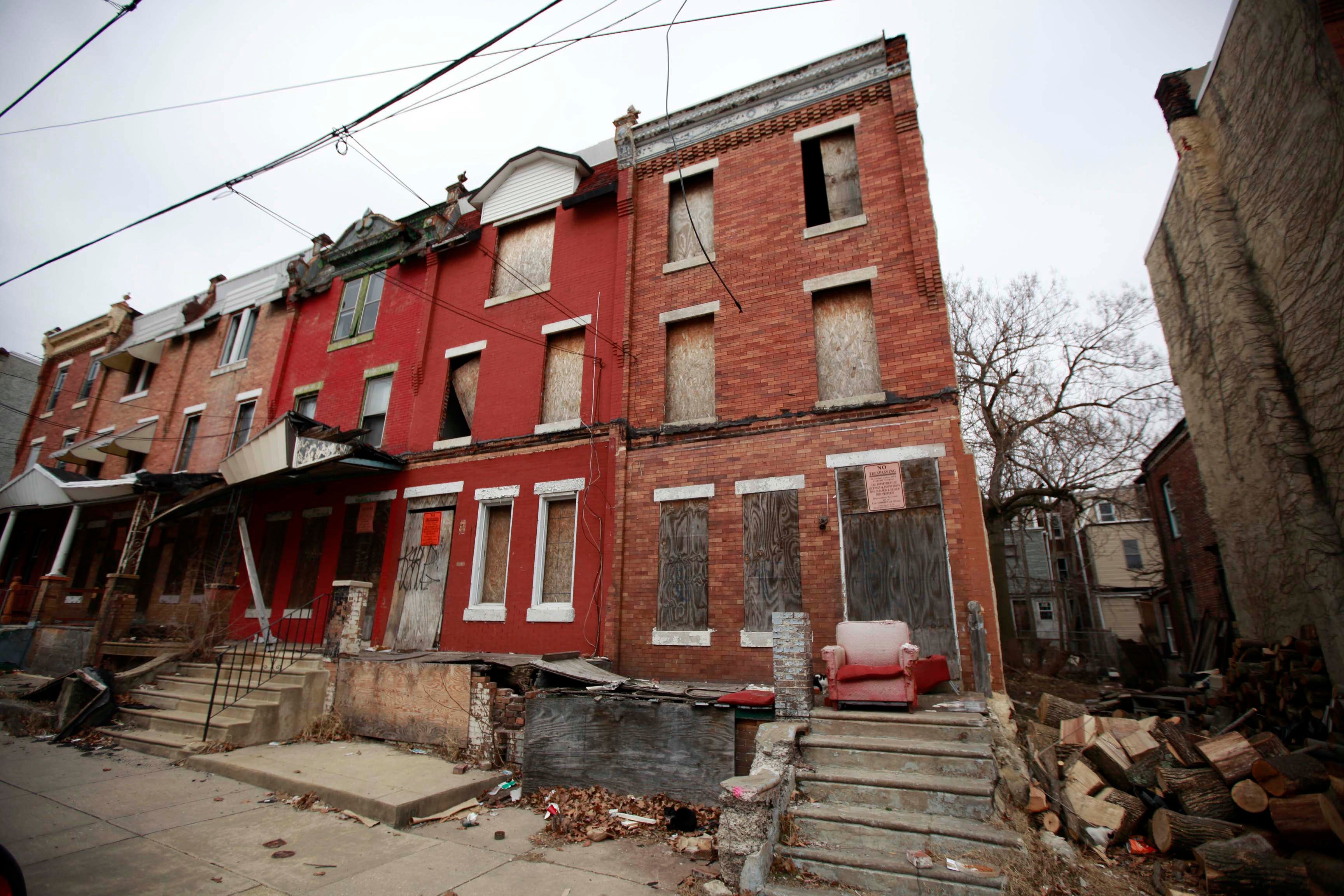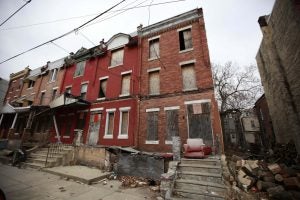Special report: Signs of progress amid delinquency crisis

Philadelphia’s massive property tax delinquency tab continued to grow over the past year, rising from $515 million in April 2012 to $522 million this April, city records show.
For the first time since Mayor Nutter took office in 2008, the rate of growth on the delinquency debt slowed sharply. The city also has made notable gains in reducing the total number of delinquent accounts, from 102,787 in April of last year to 97,310 in April 2013.
The latest figures suggest that the city’s collection efforts are improving but have yet to yield major progress in the decades-long struggle to contain a delinquency epidemic that ranks among the worst in the nation.
Those figures are accompanied by a series of reforms initiated by the Nutter administration which suggest that city government is grappling with the problem more urgently. In the last few months, new leadership, new enforcement tools and new city and state laws have been brought to bear on a delinquency crisis that, at least to-date, has been subject to plenty of mayoral bluster, but little measurable action.
“The important information from us is that we have new eyes on this problem … We are focused on results. And we are committed to cultural change internally,” Thomas Knudsen, who was named the city’s new chief collections officer in April, said in an interview.
Repairing the damage done by Philadelphia’s tax delinquency epidemic – ravaged neighborhoods, a depleted tax base, crippled city and school budgets – is an endeavor that will take years, if not decades, to complete.
But the administration’s change in tone – and the admission of the Nutter administration’s own culpability in the problem – is notable.
That rhetorical shift is accompanied by:
-
An overhaul of the way the city enforces property tax delinquency, including revamping payment plans for those in default and expediting foreclosures for those who are delinquent. The new ordinance, adopted in June, takes effect October 1.
-
New enforcement tactics, including threatening delinquent companies with revocation of business licenses, placing income-producing delinquent properties into receivership, and seizing the rents to pay off back taxes.
-
The expected passage of state legislation that will allow the city to garnish the wages of tax delinquents, and to place liens on properties owned by landlords with holdings outside of Philadelphia.
-
A “state-of-the-art” data warehouse and case management system to better pursue tax delinquents.
-
Setting a target for improved property tax collections: a total of $34 million, $19 million of which is allocated for school funding by June 30, the end of the city’s fiscal year
PlanPhilly and The Inquirer, in stories published since 2011, chronicled the severe consequences of Philadelphia’s long-running neglect of property tax collection. The reporting revealed that mass tax delinquency has had a calamitous effect on property values.
Delinquent properties generate blight at a prodigious pace, racking up huge numbers of code violations and draining the city’s property tax base of $9.5 billion, the reporting revealed. In addition, most long-term delinquent property owners are subject to little enforcement action. A majority – 59 percent – are speculators, landlords and suburbanites, not owner occupants.
Between 2009 and 2012, Philadelphia’s delinquency crisis spread at an alarming rate, with the total amount owed the city in delinquent taxes, penalties and interest growing from $425 million to $515 million, a 21.4 percent surge. Annualized, the delinquency tab had been growing at more than seven percent a year.
However, between 2012 and 2013 that growth rate fell to 1.4 percent. In past years, the Nutter administration might have embraced these numbers as signs of significant improvement. That is not the case now.
The city’s former delinquency chief, Revenue Commissioner Keith Richardson, abruptly left the department in April. His replacement, Clarena Tolson, describes herself as a “turnaround agent,” and says she has a “heavy lift” in changing the culture of the Revenue department, the new numbers notwithstanding.
“We’re here to do something that’s quite simple and basic. Increase our collections and decrease our delinquency,” Tolson said. “If I don’t produce improved collections then I’ve not done what I need to do.”
The former chief of the Streets Department, Tolson has no experience in tax collection. But she is regarded as one of the Nutter administration’s most effective managers. Knudsen, who as chief collections officer oversees Tolson’s department and smaller income streams in other departments, previously served as Chief Recovery Officer for the School District of Philadelphia and as CEO of the Philadelphia Gas Works.
At PGW, Knudsen inherited a utility with a dismal record of collecting from its customers. In three years, he raised the collection rate by a remarkable 10 percentage points, gains which helped the utility evolve from a consistent money-loser into a profitable enterprise that the city is now considering selling off to a private operator.
Critics of the city’s delinquency enforcement – both in government and out – are guardedly optimistic about the new leadership.
“Well, nothing has really changed yet. But I think for the first time you can see the light of change coming,” said Councilman Bobby Henon.
Henon and five fellow freshmen council members convened hearings on the city’s property tax delinquency performance this spring. The hearings will resume in the fall.
“They appear to be doing all the right things,” said Thomas Ginsberg, project manager at the Philadelphia Research Initiative of the Pew Charitable Trusts, and the coordinator of a Pew study examining the collectability of the city’s delinquent property taxes.
“Of course it’s wait and see, but I see a recognition of the problems and a willingness to consider doing things differently.”
For Philadelphia to reach collections parity with other big U.S. cities and reduce its overwhelming delinquency inventory to more manageable levels is a job that will require not just new thinking, but persistence. A problem of this scale took decades to develop (there are nearly 9,500 properties in Philadelphia that are 20 or more years in arrears on their taxes), and it could well take multiple mayoral administrations to make right. The recent reforms and the legislative changes are intended to accomplish just that.
But a number of new initiatives already underway and in the works represent a start.
Next month, the city will revive a dormant enforcement tactic that allows it to seize rents and other income generated by tax delinquent properties. Called sequestration, the process puts properties into a form of temporary receivership, where the parcel will be managed by a third party working on contract with the city. It’s been used sparingly in the past, and not at all in recent years. But Knudsen believes sequestration can be an effective alternative to foreclosure for those properties are generating income.
Another new tactic is the threat of revoked commercial activity licenses. Over the past two months, 64 businesses have been targeted, yielding $1 million in tax payments and short-term payment agreements for $4 million more, Tolson said.
Longer term, the city may begin towing or booting the cars of tax delinquents.
City Council has played a significant role as well, taking the lead on a rewritten property tax delinquency enforcement law, which takes effect in a month and a half. That ordinance, sponsored by council members Bill Green and Maria Quinones Sanchez, seeks to solve two of the most persistent problems in the city’s enforcement apparatus: the inconsistent and poorly managed payment agreements for delinquent taxpayers, and deeply-rooted reluctance to promptly begin foreclosure proceedings against delinquent properties.
The ordinance creates hard and fast rules for the payment plans, and, for residential delinquents, ties the minimum payment to income. The law also obligates the city to follow a long-standing state requirement to “proceed” on enforcement of tax claims if a property owner is more than one year delinquent and not in a payment plan.
Through the first seven months of the year, the city was offering an average of about 360 tax delinquent properties for sheriff auction per month. That’s more than last year, and a match for all but the highest volume months in the past decade.
But the sales volume remains well below the Nutter administration’s stated target of 600 properties per month, a figure that is large enough to begin significantly reducing the backlog of tax delinquent parcels.
Knudsen said increasing sheriff sales was still a goal, But the administration’s hope is that other enforcement tools – such as putting delinquent properties into receivership – would relieve some pressure on the sheriff sale system, he said.
The city views the Sheriff’s Office as a hindrance to more aggressive action–it the subject of an ongoing FBI investigation. The office is in the middle of a significant technology makeover, scheduled to be in place by the end of 2014.
Knudsen said the new technology will make it easier for the city to send the sheriff larger volumes of tax delinquent properties for auction. “I think we can probably do a lot better,” he said.
Another tool that is receiving consideration is a lien sale. This method – which is used by many cities as their chief enforcement mechanism – essentially sells the city’s lien on delinquent properties to a third party, in exchange for payment of the delinquent taxes. The third party then has the right to collect from the property owner, and to foreclose on the property if the owner does not pay up.
As recently as two weeks ago, Knudsen described lien sales as “a back of the pack” option. But the ongoing schools funding crisis may have changed his thinking. Council President Darrell L. Clarke has called for a lien sale to help fund the schools, and in an email this week, Knudsen said, “in light of current circumstances, we are examining the use of tax liens as a financial tool in addition to other options.”
Indeed, the school funding crisis is clearly the focus of the city’s new collections leadership. Tolson and Knudsen have, so far, paid scant attention to the vast inventory of chronically delinquent property, much of which is vacant and blighted.
The debts on those parcels are much more difficult to collect, and frequently receive little interest at sheriff sales. And yet those properties do the most damage to the neighborhoods, dragging down property values and lowering the quality of life.
Vacant land activists have lobbied the city aggressively to establish a land bank and begin transferring abandoned, low-value delinquent properties into the bank. But when asked about the land bank, Knudsen said “we haven’t focused a lot of energy on it yet.”
That focus will come in time, Tolson said. But right now, their job is “to triage the system.”
Patrick Kerkstra’s article is part of a continuing partnership between The Inquirer and PlanPhilly. In March, that effort produced a three-day series on the tax-delinquency crisis in Philadelphia. PlanPhilly.com is an independent news-gathering entity covering the “built environment.” It is affiliated with PennPraxis, the clinical arm of the School of Design at the University of Pennsylvania.
WHYY is your source for fact-based, in-depth journalism and information. As a nonprofit organization, we rely on financial support from readers like you. Please give today.




